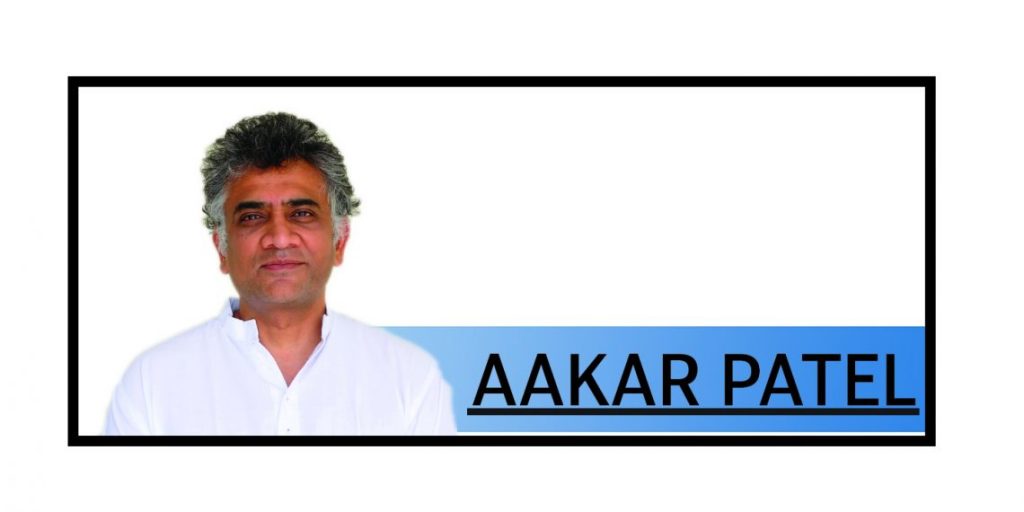The BJP’s Ram Madhav has written an article titled “For South Asia to grow, communalism must end.” It makes two points in the main. The first is that South Asia is “on track to be the fastest growing region in the world.” Despite turmoil in Bangladesh and Pakistan, the parts that once made up all of Hindustan will grow at over 6 per cent. The second point Madhav makes is for prosperity, South Asia must give up communalism. This is an accurate prescription. The question is how does one achieve that? Since this is the subject of the book I am writing, it is something that I have grappled with as well. The conclusion I have arrived at is that it is not possible for South Asia to normalise internally, meaning becoming less communal, without normalising externally with the other parts of what used to be united India. But again, how does one normalise externally? The present situation is our region is such that cricket is not played across borders, visas are not given, we have shrunk our diplomatic presence in Bangladesh and so on.
To find an answer to that we have to look at other parts of the world that have had hostilities, in many instances worse and more painful than the ones historically suffered here, to see what they have done.
Germany and France fought against each other in two world wars, with millions killed. Almost the entire western front of World War 1 was fought on French soil. Under Hitler, Germany occupied France after a military humiliation. Today, the countries have normalised. They have not merged themselves and France remains France and so does Germany as an independent nation but in terms of trade and movement, they are normal.
The European Union project began, just after the Second World War with the integration of the steel and coal industries (because those were directly linked to war preparation).
ASEAN, the Association of South East Asian Nations, is also one that has a history of hostilities. Singapore hanged two Indonesian Marines after they were convicted of a terror bombing inside Singapore. Today, this is one of the world’s largest trading zones. It has Buddhists, Muslims, Hindus, Communists and all sorts of people integrated and offering each other visa-free travel.
China occupied Vietnam for centuries and even today this is remembered, and the Vietnamese are wary. But that has not stopped them from trading with China. Or stopped China from opening up to Japan, which had occupied it in the same decade as Partition happened. In fact Netaji’s Indian National Army was allied to that same Japanese force till the fall of Singapore to the allies.
Both Europe and ASEAN offer us a way forward to do what Madhav is saying is needed. His argument focuses mostly on the others and his belief is that India is fine and does not need to do much because communalism is only the exception for us whereas it is the rule for the others. We can argue over this but today I am not going to. We can accept the broad argument. The question is how to proceed towards a solution. Madhav does not go there but my book does.
The World Bank says that “South Asia is one of the least integrated regions in the world in terms of trade and people-to-people contact.”
Intraregional trade between Bangladesh, India and Pakistan accounts for 5 per cent of our total trade, compared to South East Asia where the number is five times higher. Trade annually in South Asia is $23 billion though it should really be over $100 billion. Why? The problem is purely man-made. The World Bank says that “border challenges mean it is about 20 per cent cheaper for a company in India to trade with Brazil instead of a neighbouring South Asian country.” Transport and logistics costs for trade between South Asian nations are 50 per cent higher than the cost in OECD nations.
The main problem is a broad trust deficit throughout the region. “Putting aside traditional concerns and taking joint action can develop cross-border solutions to shared issues, strengthen regional institutions, improve infrastructure and connectivity, and advance trade policy,” the World Bank says. What are these ‘traditional concerns’? They are of course the unwillingness to integrate, the hostility that has ended movement across the borders of people and capital, the invocation of bogeymen to discourage citizens from thinking of a more united future, and above all the absence of political imagination.
The benefits are clear: “Regional cooperation has the potential to produce signifi cant gains across all countries of South Asia.” This is the solution. We have to trade more with each other, we have to be more open to each other in terms of visitors, and we have to think of ways in which the region can work together on larger challenges such as climate change.
This will need leadership from the largest state. We are also the one that is likely to benefit most, at least in the short term given our manufacturing base. As I wrote last week, half of all medical tourists coming into India are from Bangladesh. Few if any Pakistanis can come because relations are frozen.
It appears that the solution is simple, but in fact it is being held back by internal nationalisms. Many do not want a solution because the problem is either not properly understood or, as in the case of some political parties, the problem of communalism is the reason for their existence.
By Aakar Patel
